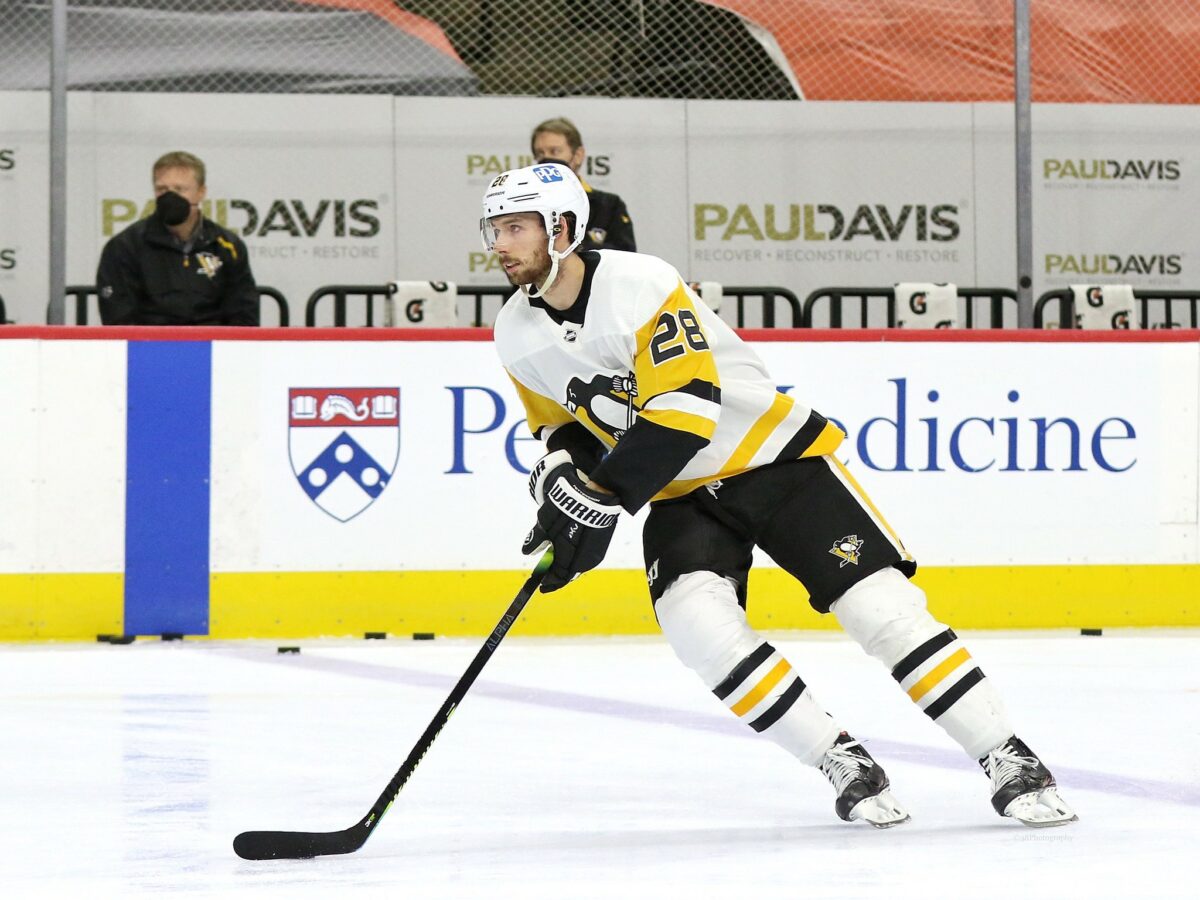The Pittsburgh Penguins had an extremely rough start to the 2022-23 NHL season. Through their first 12 games, the team sat with a 4-6-2 record, which was good for 27th in the entire league. After losing to the Seattle Kraken (3-2) in the final game of their seven-game losing streak, the team had a rare three-day break in which they were able to recuperate, practice, and make some changes to the lineup.
Since this lengthy break, the team has been shot out of a cannon with a 5-1-1 record to boost their overall record to 9-7-3. It was important for the team to regroup as 75 percent of NHL teams that are in a playoff position by American Thanksgiving generally end up making the playoffs. Only four teams have a better record than the Penguins during this stretch. Here are the four main reasons why the Penguins have been able to turn their play around.
Sidney Crosby & Rickard Rakell Reunited
Rakell started the year with Crosby and Jake Guentzel on the first line, but this didn’t last long due to injuries within the lineup. As the lines were shuffled, Rakell found his place on the second line with Evgeni Malkin. With Bryan Rust taking his place, the first line started to become a non-factor, as the chemistry was non-existent.
However, Penguins coach Mike Sullivan’s decision to move Rakell back with Crosby has sparked this team to pure dominance. With these two on the ice together at 5-on-5 this season, the team has scored 13 goals and only given up four. In fact, since Rakell was acquired last season, the Penguins have scored 23 goals and only given up five with this duo. The team is a whopping 6-0-1 with these two playing together, so why did it take Sullivan so long to make the change?

Many rumors around the league suggest that Crosby likes to choose who he plays with, and since there has been chemistry in the past with Rust, it is possible that this was the case. The reality is that with Rust by his side, he has seven points in 11 games. With Rakell by his side, he has 20 points in eight games. It is baffling that it took this long to make the switch, but the team is now trending in the right direction because of it.
Penguins Penalty Kill Sparks Momentum
The Penguins had a rough go on the penalty kill (PK) in their first 12 games, as they only killed off 73.2 percent of their penalties. The team was soft on the boards, slow to retrieve pucks, and they were having a hard time moving players out of the crease for the goaltenders to be able to track the puck. During their 5-1-1 streak, the team has killed off 90.9 percent of their penalties, which is third in the league during that time. The return of Teddy Blueger has contributed to this success, as well as playing a simple-minded game and using speed to pressure at the point.
Related: Penguins Coach Sullivan Finally Making Some Changes
Overall, the Penguins have been shorthanded 22 times while only giving up two goals during this streak. In addition, Brock McGinn has a shorthanded goal, which gives the Penguins the best-shorthanded goal differential (-1) in the entire NHL since Nov. 8. The team has been shorthanded 63 times so far throughout the season, so they are going to need the penalty kill to stay strong as they look to improve in the coming weeks.
Penguins Defensive Overhaul
During the first 12 games of the year, the Penguins continued to roll with the same defensive pairs. Brian Dumoulin was paired with Kris Letang, Marcus Pettersson with Jeff Petry, and Pierre-Olivier Joseph with Jan Rutta. These pairs led the Penguins to their 4-6-2 record, but Sullivan finally switched them after their seven-game losing streak. Dumoulin struggled on the first pair and was on the ice for the most goals against in the entire NHL, which led to his demotion. He was moved down because of his play and has recently split time between the second and third pairs with Petry and Rutta.

Since this switch, the Penguins have gone 5-1-1, and it seems as though their new pairs are starting to gain traction and chemistry. Letang is now able to roam around a bit more freely with Pettersson as his rock, as the latter can fend off opportunities with his great defensive game. With easier competition and playing alongside Petry, Dumoulin has actually improved his game and has been less noticeable in a good way. Lastly, Joseph and Rutta have been the most consistent pair, as they both lead the team in most analytical categories among defensemen, such as Corsi-for percentage (CF%) and expected goals percentage (xGF%).
Chemistry Between Jason Zucker & Malkin
Zucker and Malkin might be the most consistent duo throughout the first 19 games of the season. With them on the ice together, the Penguins have a 54.66 CF% at 5-on-5 (217 shot attempts for and 180 shot attempts against); this is among the highest for duos in the entire NHL. These two also have a 61.10 xGF% at 5-on-5 while scoring 14 goals together. The reason for the connection is clear, as Zucker is the exact type of player that Malkin needs to be successful. As Malkin has gotten older, his speed has decreased, which is why Zucker’s speed is necessary on the line. He is able to forecheck, cause turnovers, and get the puck to Malkin, who is producing over a point per game with Zucker by his side.
Zucker is off to the best start in his entire career at 30 years old. Through his first 17 games, he has posted 15 points and owns the highest CF% on the entire team at 56.05 percent. These two have only been on the ice for eight 5-on-5 goals against all year, which is a remarkable improvement from last season. If they keep trending in a positive direction, the Penguins’ top-six will be very hard to overcome for any opponent.
What’s Next for the Penguins?
The Penguins survived 12 of 15 games on the road and now sit right outside the top eight in the Eastern Conference. The team will play eight of their next ten games at home, which should give a big boost to a team that has been longing to play in front of its fans. As long as these four changes continue to succeed, there is nothing holding the Penguins back from taking that next step and finding a way into the top eight relatively soon.